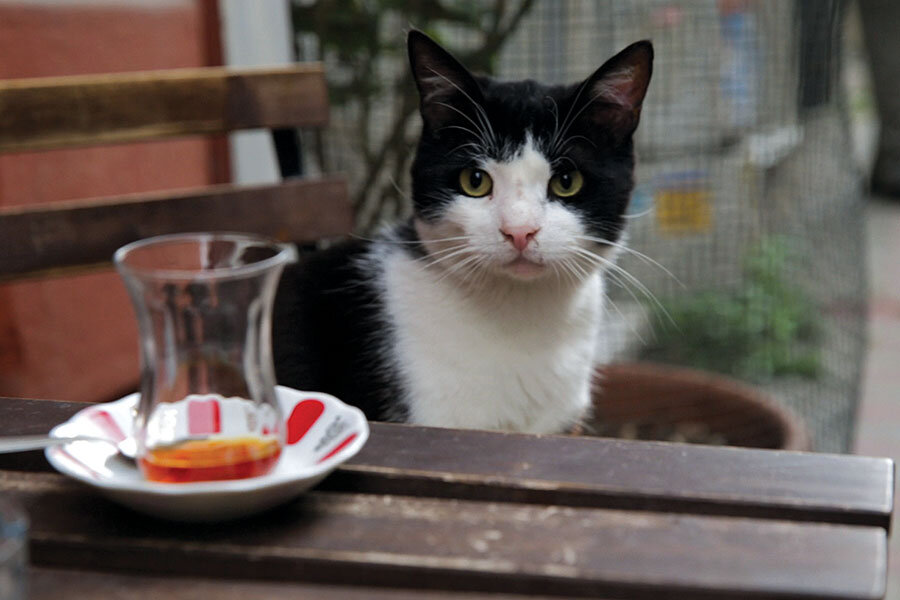'Kedi' is about how animals can bring out the kindness in people
Loading...
“Kedi,” a Turkish documentary about the stray cat population in Istanbul, is not just a movie for cat people. I loved it and I am more of a dog person, though I admit to having bonded with a few felines in my day. I daresay even elephant or giraffe people will love it, too.
Ceyda Torun, who grew up in Istanbul, Turkey, before relocating to the United States, has made a movie so far beyond the cute kitty stuff one sees on YouTube that it’s almost insulting to draw the comparison. What she has given us here could perhaps best be described as a frisky tone poem.
The stray cats in Istanbul, numbering in the many thousands, arrived centuries ago in cargo ships and, since the Ottoman Empire, have remained fixtures. At least from what we are shown, the citizens’ attitudes toward these cats is one of high indulgence bordering, in some cases, on veneration. The cats Torun focuses on, about seven in all, prowl and yowl like scruffy royalty. They appear to have adopted their caregivers rather than the other way around.
They know exactly where to forage for food, not only for themselves but, in some cases, for their litter. A cat nicknamed Duman goes straight to the local deli and paws the rear window until his repast of choice, smoked turkey, is provided. Little Lion prowls the docks and is a boon to restaurateurs grateful to have the local mouse population reduced. The point is made repeatedly that cats, like people, possess highly distinctive personalities, if one only bothers to pay attention.
The Istanbul interviewees believe it is their responsibility to look after the cats but not confine them as indoor pets. This responsibility is a matter of almost spiritual deference. Does this attitude extend to dogs? Judging from a sentiment quoted by a cat lover in the film, it’s doubtful: “Dogs think that people are God but cats don’t. Cats know that people act as middlemen to God’s will. They’re not ungrateful. They just know better.”
While I would like to hear from the dogs about this calumny, the words strike home in “Kedi” (which means “cat” in Turkish) because it supports the testimony of so many of the people in the film. A fisherman describes how, when he was in danger of losing his boat to debt, a cat crossed his path and forcibly nudged him in the direction of a lost wallet full of money. (Wonder how the owner of that wallet might feel about all this feline fealty?) Another man discusses how his deep depression was lifted only when he discovered the blessing of distributing food daily to a small army of strays. (Almost everyone we hear from keeps a running tab with the local vet.) A woman states that without cats, the streets of Istanbul would seem soulless, and worries, as many do, that ongoing urban construction will displace the cats’ hideaways.
Torun, with the immense help of her cinematographers, Charlie Wuppermann and Alp Korfali, and her editor, Mo Stoebe, blends the disparate footage with seamless grace. The kitty-cam shots are fluid without being stuntlike; they place you with the cats without overdoing the anthropomorphism. This is not a Disney movie. We may find ourselves connecting in a very personal way to a particular cat (for me it was Smokey, the glutton), but we are not encouraged to believe that they are humanlike, not to mention godlike emissaries from the great beyond. The most cogent description of the people-cat relationship comes from a woman in an open-air market (a favorite spot for felines) who says that interacting with a cat resembles what it might be like to connect with an alien from outer space. With nothing much in common, one still learns to make sense of each other and create a mutual language, a bond.
Torun doesn’t introduce too many naysayers: We don’t hear from health officials or from people who don’t care for or are allergic to cats. A too-brief shot of a little girl panhandling at the same restaurant where a cat is foraging is a reminder of the homelessness and human desperation that must also be a part of this city.
While I was watching it, I thought “Kedi” was about cats, but in retrospect I can see what Torun was really after: It’s a movie about how animals can bring out the kindness in people. As an old man says in the film, “Everything is beautiful if looked at with love.” Grade: A- (This movie is not rated.)







